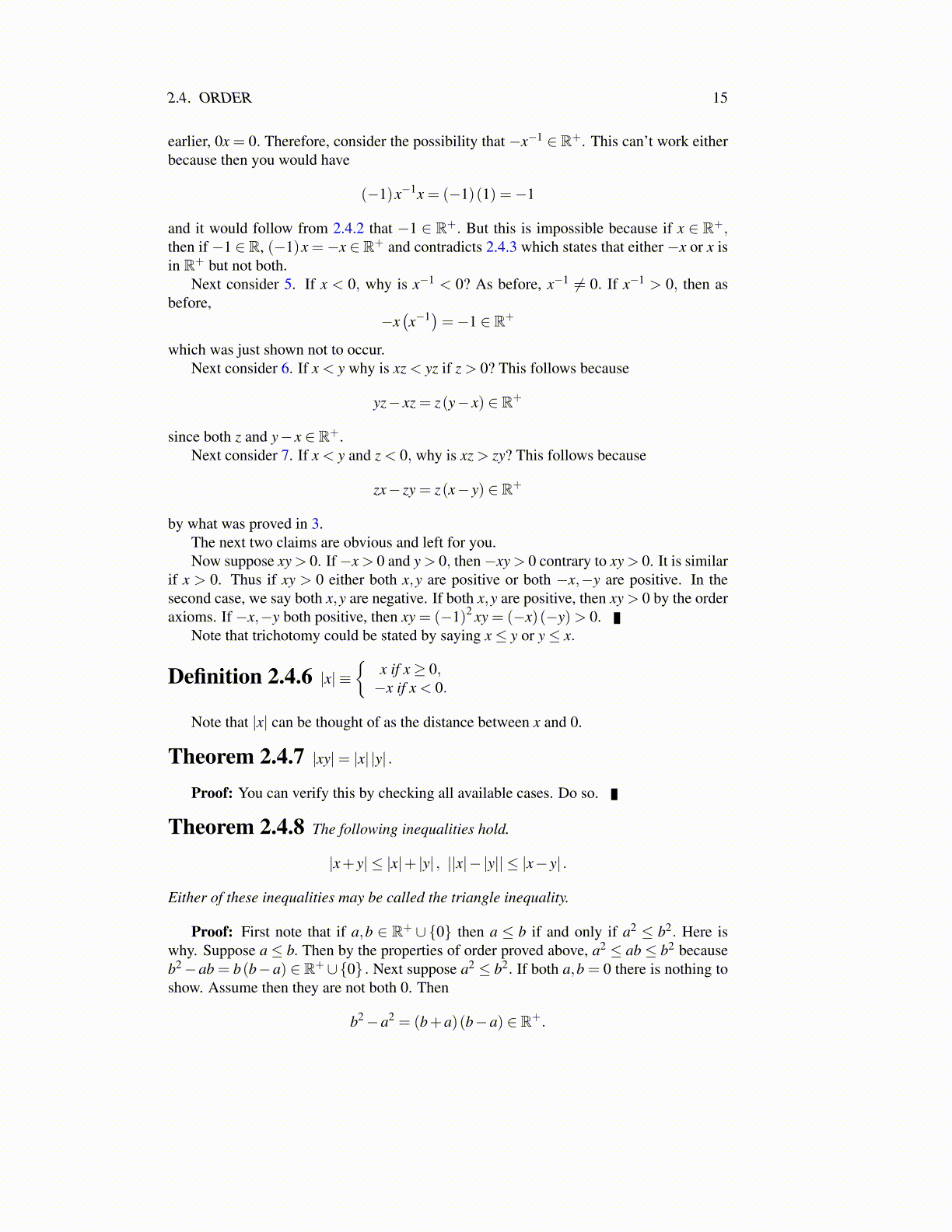
2.4. ORDER 15
earlier, 0x = 0. Therefore, consider the possibility that −x−1 ∈ R+. This can’t work eitherbecause then you would have
(−1)x−1x = (−1)(1) =−1
and it would follow from 2.4.2 that −1 ∈ R+. But this is impossible because if x ∈ R+,then if −1 ∈ R, (−1)x =−x ∈ R+ and contradicts 2.4.3 which states that either −x or x isin R+ but not both.
Next consider 5. If x < 0, why is x−1 < 0? As before, x−1 ̸= 0. If x−1 > 0, then asbefore,
−x(x−1)=−1 ∈ R+
which was just shown not to occur.Next consider 6. If x < y why is xz < yz if z > 0? This follows because
yz− xz = z(y− x) ∈ R+
since both z and y− x ∈ R+.Next consider 7. If x < y and z < 0, why is xz > zy? This follows because
zx− zy = z(x− y) ∈ R+
by what was proved in 3.The next two claims are obvious and left for you.Now suppose xy > 0. If−x > 0 and y > 0, then−xy > 0 contrary to xy > 0. It is similar
if x > 0. Thus if xy > 0 either both x,y are positive or both −x,−y are positive. In thesecond case, we say both x,y are negative. If both x,y are positive, then xy > 0 by the orderaxioms. If −x,−y both positive, then xy = (−1)2 xy = (−x)(−y)> 0.
Note that trichotomy could be stated by saying x≤ y or y≤ x.
Definition 2.4.6 |x| ≡{
x if x≥ 0,−x if x < 0.
Note that |x| can be thought of as the distance between x and 0.
Theorem 2.4.7 |xy|= |x| |y| .
Proof: You can verify this by checking all available cases. Do so.
Theorem 2.4.8 The following inequalities hold.
|x+ y| ≤ |x|+ |y| , ||x|− |y|| ≤ |x− y| .
Either of these inequalities may be called the triangle inequality.
Proof: First note that if a,b ∈ R+ ∪ {0} then a ≤ b if and only if a2 ≤ b2. Here iswhy. Suppose a≤ b. Then by the properties of order proved above, a2 ≤ ab≤ b2 becauseb2−ab = b(b−a) ∈ R+∪{0} . Next suppose a2 ≤ b2. If both a,b = 0 there is nothing toshow. Assume then they are not both 0. Then
b2−a2 = (b+a)(b−a) ∈ R+.